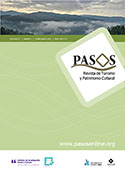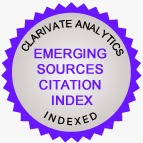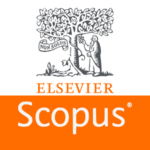Analysis of the cultural motivation behind visits to World Heritage Sites: Case study of the Medina Azahara Archaeological Ensemble
DOI:
https://doi.org/10.25145/j.pasos.2025.23.013Keywords:
Cultural tourism, Applied research, Archaeological museum, Quantitative analysis , SpainAbstract
Knowledge of the typology of visitors to a site inscribed as a World Heritage Site by UNESCO is key to the proper management of tourist destinations. This research presents a segmentation of tourists visiting the Archaeological Ensemble of Medina Azahara in Cordoba (Spain), inscribed as a World Heritage Site since 2018, based on the results obtained after fieldwork consisting of a survey to visitors of the Archaeological Ensemble of Medina Azahara, between the months of February and June 2022, obtaining 684 valid surveys. The results are in line with previous research, distinguishing five different motivational dimensions. It is concluded that visitors with a higher cultural and hedonic motivation have a higher satisfaction. The results of the research will be very useful for tourism managers to create products tailored to potential customers.
Downloads
Publication Facts
Reviewer profiles N/A
Author statements
- Academic society
- PASOS. Revista de Turismo y Patrimonio Cultural
- Publisher
- Instituto Universitario de Investigación Social y Turismo. Universidad de La Laguna (España) - Instituto Universitario da Maia ISMAI (Portugal)
References
Abuamoud. I. N., Libbin. J., Green. J. y Alrousan. R. (2014). Factors affecting the willingness of tourists to visit cultural heritage sites in Jordan. Journal of Heritage Tourism. 9(2). 148-165. doi: 10.1080/1743873X.2013.874429.
Adie, B. A. (2017). Franchising our heritage: the UNESCO World Heritage brand. Tourism Management Perspectives, 24, 48-53. doi: 10.1016/j.tmp.2017.07.002.
Adie B. A.. y Hall. C. M. (2017). Who visits World Heritage?. A comparative analysis of three cultural sites. Journal of Heritage Tourism, 12(1), 67-80. doi: 10.1080/1743873X.2016.1151429.
Almeida-Santana, A. y Moreno-Gil, S. (2018). Understanding tourism loyalty: Horizontal vs. destination loyalty. Tourism Management, 65, 245-255. doi: 10.1016/j.tourman.2017.10.011.
Antón, C., Camarero, C. y Laguna-García, M. (2017). Towards a new approach of destination loyalty drivers: Satisfaction, visit intensity and tourist motivation. Current Issues in Tourism, 20(3), 238–260. doi: 10.108/13683500.2014.936834.
Alrawadieh, Z., Prayag, G. y Alrawadieh, Z. (2023). A cognitive appraisal perspective of emotional accessibility at heritage sites: empirical evidence from the UNESCO World Heritage Site of Petra. Journal of Heritage Tourism, 18 (2), 145-163. doi: 10.1080/1743873X.2023.2169152.
Bigné. J. E., Font. X. y Andreu. L. (2000). Marketing de Destinos Turísticos: Análisis y Estrategias de Desarrollo. Madrid: Esic Editorial.
Breakey. N. M. (2012). Study in of World Heritage visitors: The case of the remote Riversleigh Fossil Site. Visitor Studies. 15(1). 82-97. doi: 10.1080/10645578.2012.660845.
Bright, C. F. y Carter, P. (2016). Who are they?. Visitors the Lousiana´s River road plantations. Journal of Heritage Tourism, 11(3), 262-274. doi: 10.1080/1743873X.2015.1100627.
Chen, G. y Huang, S. (2018). Understanding Chinese cultural tourists: typology and profile. Journal of Travel & Tourism Marketing, 35(2), 162-177. doi: 10.1080/10548408.2017.1350253.
Correia, A., Kozak, M. y Ferradeira. J. (2013). From tourist motivations to tourist satisfaction. International Journal of Culture. Tourism and Hospitality Research. 7(4). 411-424. doi: 10.1108/IJCTHR-05-2012-0022.
Cronin. J. J., Brady, M. K. y Hult. T. M. (2000). Assessing the effects of quality. value. and customer satisfaction on consumer behavioral intentions in service environments. Journal of Retailing, 76(2), 193-218. doi: 10.1016/S0022-4359(00)00028-2.
Crompton, J.L. (1979). Motivations for pleasure vacation. Annals of Tourism Research, 6(4), 408-424. doi: 10.1016/0160-7383(79)90004-5.
Dann, G. M. (1977). Anomie ego-enhancement and tourism. Annals of Tourism Research, 4(4), 184-194. doi: 10.1016/0160-7383/77)90037-8.
Díaz-Ortega, R., Aguirre Montero, A. y López-Sánchez, J. A. (2023). The conceptual bibliometric analysis applied to the tourism-culture binominal 1995-2020. Pasos. Revista de Turismo y Patrimonio Cultural, 21 (1), 53-67. doi: 10.25145/j.pasos.2023.21.004.
Dolnicar, S. (2008). Market segmentation in tourism. En Woodside, A. and Martin, D. (Eds.). Tourism management, analysis, behavior and strategy (pp. 129-150). Cambridge: CABI.
Finn, M., Elliott-White, M. y Walton, M. (2000). Tourism and leisure research methods: data collection, analysis and interpretation. Harlow: Pearson Education.
García Muñoz-Aparicio, C., Pérez Sánchez, B. y Navarrete Torres, M. C. (2022). México y sus ciudades “Patrimonio de la Humanidad”. Revista Internacional de Turismo, Empresa y Territorio, 6 (2), 192-206. doi:. 10.21071/riturem.v6i2.15367.
Genc, V. y Gulertekin Genc, S. (2023). The effect of perceived authenticity in cultural heritage sites on tourist satisfaction: The moderating role of aesthetic experience. Journal of Hospitality and Tourism Insights, 6 (2), 530-548. doi: 10.1108/JHTI-08-2021-0238
Han, W., Cai, J. M., Wei, Y. G., Zhang, Y. y Han, Y. (2020). Impacts of the world heritage list inscription: A case study of Kaiping Diaolou and villages in China. International Journal of Strategic Property Management, 24 (1), doi: 10.3846/ijspm.2019.10854.
Huh, J., Uysal, M. y McCleary, K. (2006). Cultural/Heritage destinations: tourist satisfaction and market segmentation. Journal of Hospitality & Leisure Marketing, 14(3), 81-99. doi: 10.1300/J150v14n03_07.
Iso-Ahola, E. (1982). Towards a social psychology theory of tourism motivation: A rejoinder. Annals of Tourism Research, 9(2), 256–262. doi: 10.1016/0160-7383(82)90049-4.
López-Guzmán, T., Torres Naranjo, M., Pérez Gálvez, J. C. y Carvache Franco, W. (2019). Segmentation and motivation of foreign tourists in world heritage sites. A case study, Quito (Ecuador). Current Issues in Tourism, 22(10), 1170-1189. doi: 10.1080/13683500.2017.1344625.
Mariani, M. N. y Guizzardi, A. (2020). Does designation as a UNESCO World Heritage Site influence tourist evaluation of a local destination? Journal of Travel Research, online published. doi: 10.1177/0047287518821737.
McKercher, B. (2002). Towards a classification of cultural tourists. International Journal of Tourism Research, 4, 29-32. doi: 10.1002/jtr.346.
McKercher, B. y du Cros, H. (2003). Testing a cultural tourism typology. International Journal of Tourism Research, 5(1), 45-58. doi: 10.1002/jtr.217.
Morales, P., Urosa, B. y Blanco A. (2003). Construcción de escalas de actitudes tipo Likert. Una guía práctica. Madrid: La Muralla.
Moreno-Melgarejo, A. y Sariego-López, I. (2017). Relaciones entre turismo y arqueología: el turismo arqueológico, una tipología turística propia. Pasos. Revista de Turismo y Patrimonio Cultural, 18 (1), 163-180. doi: 10.25145/j.pasos.2017.15.010
Nguyen. T. H. H. y Cheung. C. (2014). The classification of heritage visitors: a case of Hue City. Vietnam. Journal of Heritage Tourism, 9(1), 35-50. doi: 10.1080/1743873X.2013.818677.
Nieto Hernández, R. (2021). Reflexiones sobre la formación de arqueólogos en la UAEMéx, como alternativa para la conservación del patrimonio arqueológico en el Estado de México. Identidad Universitaria, 1 (14), 27-21.
Oliver, R. L. (1980). A cognitive model of the antecedents and consequences of satisfaction decisions. Journal of Marketing Research, 27, 460–469. doi: 10.2307/3150499.
Pearce, P. L. (1982). Perceived changes in holiday destinations. Annals of Tourism Research, 9(2), 145-164. doi: 10.1016/0160-7383(82)90044-5.
Pearce, P. L. y Lee, U. (2005). Developing the travel career approach to tourist motivation. Journal of Travel Research, 43(3), 226–237. doi: 10.1177/0047287504272020.
Pinheiro, A. J. y Paulino, F. (2022). Urban tourism and World Heritage: Relations and effects of the classification. Pasos. Revista de Turismo y Patrimonio Cultural, 20 (5), 1243-1254. doi: 10.25145/j.pasos.2022.20.084.
Poria, Y., Reichel, A. y Cohen, R. (2013). Tourist perceptions of World Heritage Site and its designation. Tourism Management, 35, 272-274. doi: 10.1016/j.tourman.2012.02.011.
Ramires, A., Brandao, F. y Sousa, A. C. (2018). Motivation-based cluster analysis of international tourists visiting a World Heritage City: The case of Porto, Portugal. Journal of Destination Marketing and Development, 8, 49-60. doi: 10.1016/j.jdmm.2016.12.001.
Rasoolimanesth, S. M., Seyfi, S., Rather, R. A. y Hall, C. M. (2022). Investigating the mediating role of visitor satisfaction in the relationship between memorable tourism experiences and behavioral intentions in heritage tourism context. Tourism Review, 77 (2), 687-709. doi: 10.1108/TR-02-2021-0086.
Reher, G. (2020). El turismo en el patrimonio arqueológico: entre la “vitrinización” y la oportunidad Perdida. Revista de Arqueología Americana, 38, 41-60.
Remoaldo, P. C., Vareiro, L., Ribeiro, J. C. y Santos, J. F. (2014). Does gender affect visiting a World Heritage Site? Visitor Studies, 17(1), 89-106. doi: 10.1080/10645578.2014.885362.
Rodríguez-Pascua, M.Á., Perucha, M.Á., Silva, P.G., Montejo Córdoba, A.J., Giner-Robles, J.L., Élez, J., Bardají, T., Roquero, E., y Sánchez-Sánchez, Y. (2023). Archaeoseismological Evidence of Seismic Damage at Medina Azahara (Córdoba, Spain) from the Early 11th Century. Applied Sciences, 13, 16-31. https://doi.org/10.3390/app13031601
Romao, J., Neuts, B., Nijkamp, P. y Van Leeuwen, E. (2015). Culture, product differentiation and market segmentation: a structural analysis of the motivation and satisfaction of tourists in Amsterdam. Tourism Economics, 21(3), 455-474. doi: 10.5367/te.2015.0483.
Ross, D., Saxena, G., Correia, F., y Deutz. (2017). Archaeological tourism: a creative approach. Annals of Tourism Research, 67, 37-47. http://dx.doi.org/10.1016/j.annals.2017.08.001
Saipradist, A. y Staiff, R. (2007). Crossing the cultural divide: Western visitors and interpretation at Ayutthaya World Heritage Site. Thailand. Journal of Heritage Tourism, 2(3), 211-224. doi: 10.2167/jht061.0.
Sato, S., Kim, H.m Buning, R. J. y Harada, M. (2018). Adventure tourism motivation and destination loyalty: a comparison of decision and non-decision makers. Journal of Destination Marketing & Management, 8, 74-81. doi: 10.1016/j.jdmm.2016.12.003.
Silberberg, T. (1995). Cultural tourism and business opportunities for museums and heritage sites. Tourism Management, 16(5), 361-365. doi: 10.1016/0261-5177(95)00039-Q.
Solis, R. S. (2002). El patrimonio arqueológico y su importancia en el Desarrollo del Perú. Arqueología y Sociedad, 14, 11-18.
Tucker, H. y Carnegie, E. (2014). World heritage and the contradictions of ‘universal value’. Annals of Tourism Research, 47, 63-76. doi: 10.1016/j.annals.2014.04.003.
Vareiro, L., Freitas Santos, J., Remoaldo, P. C. y Cadima Ribeiro, J. (2016). Evaluating the Guimarães 2012 European capital of culture: National and international tourists’ behaviors and perceptions. Event Management: An International Journal, 20(1), 88–98. doi: 10.3727/152599516X14538326025152.
Vena Oya, J., Mudarra Fernández, A. B., Calahorro López, A. y Cazallo Antúnez, A. M. (2022). ¿Es eficaz la marca WHS en la atracción de turismo internacional? Evidencia sobre España. Pasos. Revista de turismo y Patrimonio Cultural, 20 (2), 275-284. doi: 10.25145/j.pasos.2022.20.020.
Vong, L. T. N. y Ung, A. (2012). Exploring critical factors of Macau´s Heritage tourism: what heritage tourists are looking for when visiting the city´s iconic heritage site. Asia Pacific Journal of Tourism Research, 17(3), 231-245. doi: 10.1080/10941665.2011.625431.
Yolal, M., Woo, E., Cetinel, F. y Uysal, M. (2012). Comparative research of motivations across different festival products. International Journal of Event and Festival Management, 3(1), 66–80. doi : 10.1108/17582951211210942.
Yuksel. A., Yuksel, F. y Bilim, Y. (2009). Destination attachment: Effects on customer satisfaction and cognitive, affective and conative loyalty. Tourism Management, 31(2), 274-284. doi: 10.1016/j.tourman.2009.03.007.
Downloads
Published
How to Cite
Issue
Section
License
Copyright (c) 2024 Minerva Aguilar-Rivero, Lucía Castaño-Prieto, Miguel Jesús Medina-Viruel, Tomás López-Guzmán

This work is licensed under a Creative Commons Attribution-NonCommercial-NoDerivatives 4.0 International License.
I confirm that the work is original (of my/our authorship), and that it will not be submitted to other journals or publications until the final resolution of the review process in PASOS, RTPC.
I authorize the publication of my work by PASOS, PSTN of free and open access in any of the formats that I deem appropriate, for an indefinite period of time and as a non-remunerated collaboration.
Likewise, the author(s) understands that the published work may be linked or deposited on any server or included in other publications (republication), provided that the new place and/or new edition references the original publication and acknowledges the authorship and copyright ownership of PASOS RTPC publications.
Authors understand that a plagiarism-self-plagiarism check will be performed, and the article may be removed at any time from the editorial flow.










